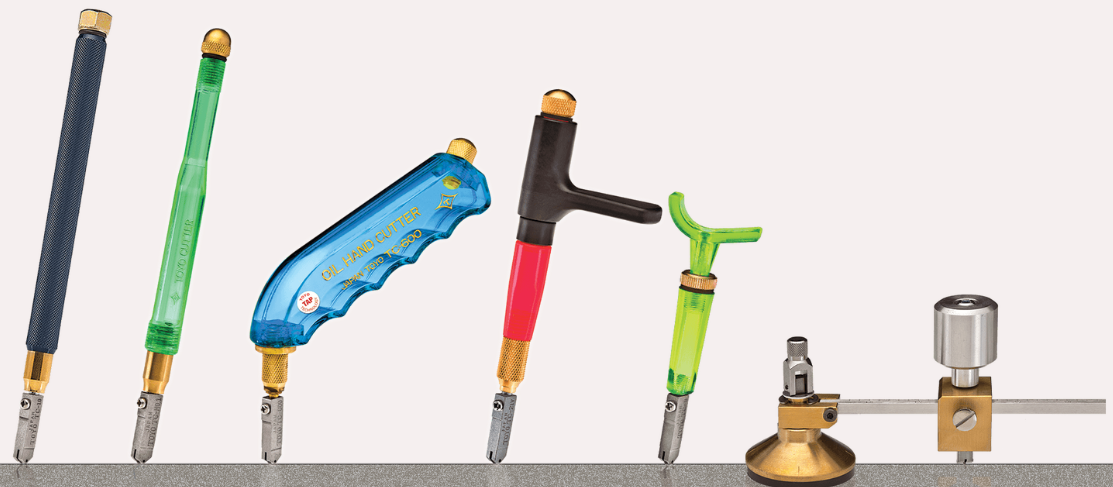
Choosing the right glass cutter:
Several types of glass cutters are available for stained glass, each with its own advantages:
- Pencil-grip cutters These are the most basic and affordable. They are held like a pencil and are good for small projects.
- Oil-filled cutters These cutters have a reservoir for cutting oil that lubricates the wheel as you cut. This provides smoother cuts and reduces friction and wear.
- Pistol-grip cutters These cutters have a pistol-shaped handle that can be more comfortable to hold, especially for those who experience hand or wrist fatigue or have arthritic hands.
- Carbide wheel cutters These cutters have a carbide cutting wheel that is harder and lasts longer than steel wheels, providing cleaner, more precise scores.
Recommendations for beginners
- The pistol grip Oil feed glass cutter is a popular choice for beginners due to its ease of use and comfortable grip. It uses a tungsten carbide wheel and includes two replaceable heads for different glass thicknesses.
- The Toyo Comfort Grip Supercutter is also a recommended beginner's tool. It is lightweight, has a comfortable grip, and makes clean cuts without much effort.
For intermediate and advanced users
- The Morton Glass cutting system or the Beetle Bits system provide more advanced features for experienced users. It glides effortlessly across the glass while maintaining a constant 90-degree angle and can be rotated 360 degrees, allowing for cuts in any shape.
Important considerations
- Wheel quality: Carbide wheels are generally preferred over steel wheels as they last longer and provide cleaner cuts.
- Comfort and ergonomics: Choose a cutter that feels comfortable in your hand and reduces wrist fatigue, especially if you plan to work on large projects or have weaker hands.
- Oil feed system: Self-oiling cutters keep the wheel lubricated, making cuts smoother and reducing wear. However, some users find that they leak oil. You may prefer to dip the cutting head in a separate oil reservoir instead.
- Type of cuts: If you will be making mostly straight cuts, a cutter with a wide head is recommended. For curved shapes, choose one with a narrow head.
Ultimately, the best stained glass cutter for you will depend on your individual needs and preferences. It's recommended to try out different cutters before making a purchase to find the one that feels most comfortable and provides the best results for you.